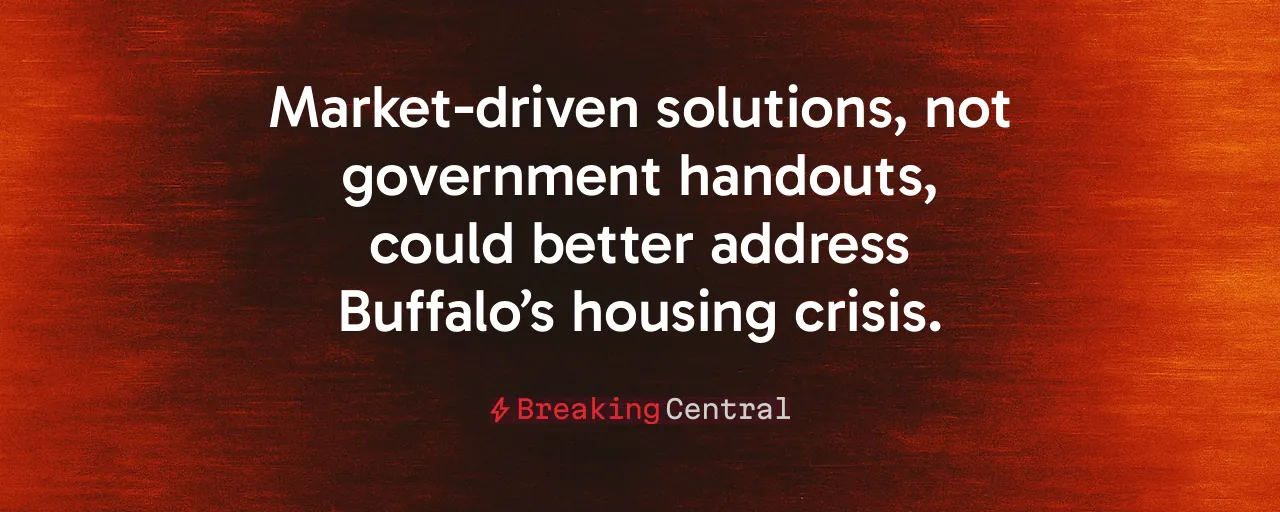A Fresh Look for Buffalo, But Questions Linger
Buffalo's East Side just got a facelift with the completion of the Ellicott Town Center, a 281-unit affordable housing complex now boasting updated kitchens, energy-efficient windows, and new siding. The $71 million project, celebrated by Governor Kathy Hochul, includes 24 units reserved for seniors and partnerships with First Shiloh Baptist Church and Beacon Communities. It's a feel-good moment for residents, no doubt. But as taxpayers, we need to ask: Is this flood of state and federal money the smartest way to tackle Buffalo's housing challenges?
The project's funding is eye-popping. Nearly $36 million in tax-exempt bonds, $23 million in state subsidies, and $31 million in federal tax credit equity fueled this overhaul, with an extra $300,000 from a clean energy fund. That's a hefty bill for 281 homes. While the First Shiloh Baptist Church's involvement is inspiring, the reliance on public dollars sparks concern. Couldn't private markets, guided by local know-how, deliver these homes more efficiently? The answer matters for every family struggling to pay rent.
Nobody denies Buffalo's housing crunch. Across America, families face soaring costs—74.9 percent of U.S. households can't afford a median-priced home at $459,826. But big government projects like this one, while they grab headlines, often sidestep the root issues. A conservative vision, grounded in fiscal restraint and market freedom, argues for a different approach, one that empowers communities and prioritizes long-term stability over short-term wins.
Why State-Led Plans Fall Short
Hochul's $25 billion housing plan aims to create or preserve 100,000 affordable homes across New York, with $112 million already spent on Buffalo's East Side since 2011. Projects like AP Lofts and Elim Townhomes have spruced up the area, yet the affordability gap remains. Nationally, seven million affordable units are missing, and more subsidies haven't fixed it. Why? Government programs tend to inflate costs and prioritize optics over efficiency, leaving taxpayers footing the bill for bloated budgets.
Other cities show a better way. In Houston and Raleigh, relaxed zoning and private development have boosted housing supply, keeping costs lower than in tightly regulated northern metros like Buffalo. Here, faith-based groups like First Shiloh Baptist Church prove local leadership works. Their partnership with Beacon Communities revitalized Ellicott Town Center, a success rooted in their understanding of community needs. Why not give local players more freedom instead of tethering them to state mandates?
Energy upgrades, like those at Ellicott Town Center, add another wrinkle. The project's 20 percent energy savings sound promising, but state-driven green requirements can jack up costs. A 2025 New York Fed study suggests tax breaks could help low-income households electrify, yet top-down mandates often burden developers. The Inflation Reduction Act's solar credits are popular, but forcing compliance risks pricing out smaller projects. A market-driven approach would let builders choose cost-effective solutions.
Empowering Markets and Communities
Conservatives see a clearer path. Project 2025, a sharp policy framework, urges cutting federal housing programs that fuel bureaucracy, like the Housing Trust Fund. House Republicans' 2025 budget trims HUD spending by 3 percent, axing redundant programs like HOME. These cuts demonstrate a trust in markets to deliver. When government eases up, private developers can build faster and cheaper, as seen in southern cities where housing starts outpace the north.
Public-private partnerships, like Ellicott Town Center's, hold real potential, but they thrive with less state control. In Alexandria, Virginia, a 2025 P3 project will deliver 373 mixed-income units by leveraging private capital. Buffalo's $27 million Mt Olive Senior Manor, funded partly by tax credits, shows how targeted incentives can preserve affordability without Albany's oversight. These models work by harnessing local expertise and private investment.
Some argue only government can protect low-income residents. Senator Chuck Schumer praises federal tax credits for keeping rents affordable, but his approach can trap families in subsidized housing, limiting their options. Conservatives back vouchers, which give families choice and foster independence. Homeownership, too, remains key. Since the 1950s, policies like FHA loans have helped families build wealth. Cutting zoning barriers and streamlining permits, as conservatives advocate, would make that dream accessible again.
Buffalo's Future Lies in Freedom
Ellicott Town Center's rehab is a victory for its residents, but Buffalo needs more than state-funded showcases. The East Side faces deep challenges, and another $71 million project won't solve them alone. Conservatives propose unleashing private investment through deregulated zoning and tax incentives for developers who build affordable homes. Local groups, like First Shiloh, should lead, not follow Albany's script.
Heavy-handed revitalization risks more than wallets; it can unravel communities. Mid-century urban renewal displaced 100,000 New Yorkers, often erasing cultural roots. Today's tools, like community land trusts, help, but they don't need state micromanagement. Buffalo's strength lies in its people. Let residents and businesses shape their neighborhoods, free from distant mandates.
Ellicott Town Center proves communities can rise when trusted. Conservatives believe Buffalo can tackle its housing crisis by embracing local ingenuity and market freedom. Cut the red tape, empower East Side families, and watch opportunity grow from the grit and heart of Buffalo itself.
